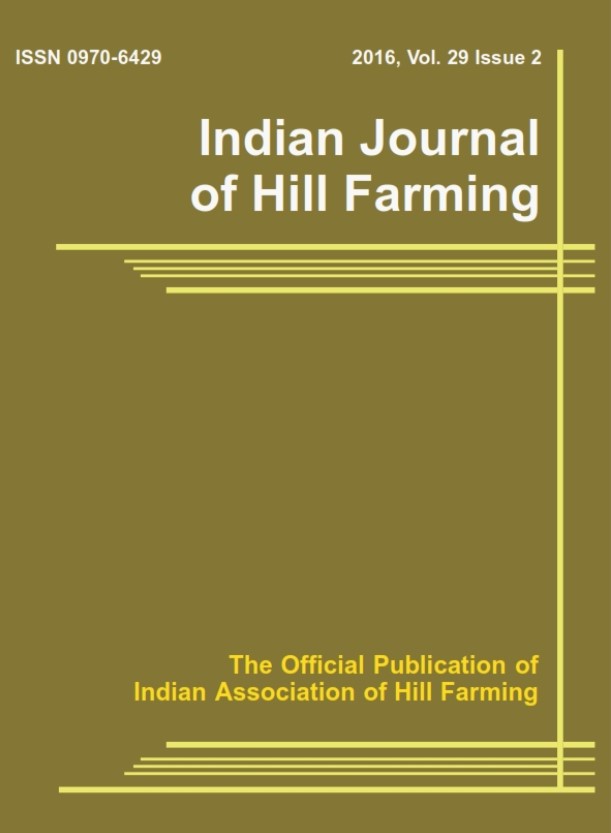Vegetative growth of tomato hybrids as influenced by fertigation levels grown under different soilless substrates in poly house conditions
Keywords:
Tomato hybrids, soilless growing media, fertigation, ventilated polyhouse, yieldAbstract
Study was conducted to assess the effect of different NPK fertigation levels on three tomato hybrids i.e. Rakshita, Naveen 2000 plus, Avtar 7711 grown in two soilless substrates (vermicompost and cocopeat+vermicompost). Field experiments were laid under naturally ventilated polyhouse for two years i.e. 2017 & 2018. Amongst three hybrids tested, Naveen 2000 plus significantly improved the fruit yield with maximum of 1096.7 & 1220.1 kg 100m-2 followed by 925.4& 992 kg 100m-2 in Rakshita with percent increase of 18.51 & 22.99 per cent. However, lowest yield was recorded under Avtar 7711 hybrid. Soilless media of cocopeat+vermicompost provided reliable results with highest fruits plant-1 (25.7 & 27.4), fruit weight (67.2 & 69.3 g), fruit yield (967.7 & 1056.1 kg 100m-2) in 2017 & 2018, respectively. Crop fertigated @30gm-2 NPK showed significant improvement with maximum fruit yield plant-1 (1.99 & 2.14 kg plant-1) and fruit yield (1105 & 1178.5 kg 100m-2). Results also showed that all the variations in growth attributes were comparable in 2018 over 2017. Therefore, study identified the supplementation of NPK @30 gm-2 to Naveen 2000 plus hybrid grown under cocopeat+vermicompost media as a prominent and promising treatment under polyhouse conditions ensuring significant production potential.




